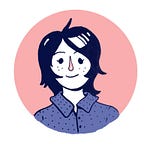Tips and tricks for working professionals with ADHD
There are many adults in the working world who have ADHD or problems with executive dysfunction, here are some tips to help get your brain to cooperate.
To begin, ADHD usually falls into being Inattentive or Hyperactive, or you may express mixed symptoms. here are some ways I have found to help deal with them and to try and corral the cats in your brain to work with you and be productive if you don’t have access to any medications.
1. Coffee
Caffeine is a double edged sword, on one hand it can help dispel the gray fog in your brain and jump start you into doing something, or, if you have too much you’ll just end up like that skeleton meme:
The trick is to drink a little bit at a time and stop when you feel alert. Drinking cold water with lemon along with your coffee or Red Bull also helps.
2. Exercise
This one is good for Inattentive and Hyperactive symptoms. It’s easier to implement if you happen to be at home and working on projects or reading endless emails, because you can just get up and take a walk around your house or your neighborhood. But if you’re at work or are in class and you keep bouncing your leg, clicking your pen and fidgeting it’s a little harder. Try taking bathroom breaks and spend a minute or two stretching, doing jumping jacks or pacing. This lets you burn some of your excess energy before you need to sit down for a while again. If your office is okay with you taking breaks, try getting up to walk a lap around the building every 30 minutes or so.
3. Stim
Stimming is another good one for when you need to sit still for a long time, like if you’re in a meeting or you can’t stop working on an assignment. It’s also something many of you might already do. Rubbing rough or sharp objects over your palms may help [it helps me] but find a texture or an object you like the feel of and try turning it over in your hands or running it through your fingers when you start to feel agitated. There are stimming and fidgeting products that have come out which are great options! If you can’t get your hands on any of them [haha puns] try using paper clips or crunched up pieces of paper.
4. Distract yourself
This seems counterintuitive, but hear me out. In the depths of brain fog, even thinking about a concept can feel like swimming through an ocean of tar. Writing can become an impossible task, and while you’re struggling to form basic thoughts all of a sudden 5 hours have passed and all you’ve written is “The”.
Try doing something else, anything else. This could include the exercise tip, but watching a show or listening to music can be really effective as well. By taking a break from fighting the fog and giving your brain something else to focus on, it can help break you out of it. Especially if what you are watching or listening to gets you excited or gives you an emotional reaction.
5. NO NAPS [unless strictly timed]
Resist the urge to take a nap when you are feeling fuzzy and lethargic, your nap may just exacerbate that feeling and you’ll end up less productive than before. If you absolutely must nap, then make sure it is very short and do not fall back asleep. The 26 minute NASA nap can be effective.
6. Change of scenery
This is another tough one if you happen to be at work, but if your cubicle is closing in on you and you’ve been staring at your computer all day try working in a break room or even someone else’s office if they’re cool with that. By changing your work area, it forces you out of your stagnant mindset to go find somewhere else to sit. If you’re able to sit by a window or near some natural lighting, that could be very helpful and even give your mood a small boost. If you’re in a very distracted mood, the window may be a bad idea, in that case try somewhere quiet and calm.
7. To-do lists and bite size tasks
Lists are your best friend. Especially big, noticeable ones. Try breaking down all of your tasks into lists, and breaking up projects into small pieces.
This will make what you need to get done less overwhelming, it will also make you feel really good when you cross something off your list. It doubles as an organizational tool and rewards system!
There are so many more things that could be helpful, but these are the most effective methods I have found. There are many resources online that can help as well. It can be hard being an adult in the working work with ADHD, it’s usually a disorder thought of as only for children and adults with it can have a hard time. It can also be tricky to get medication for it, so hopefully this list will help. Here are some more resources, and feel free to add more suggestions in the comments!
